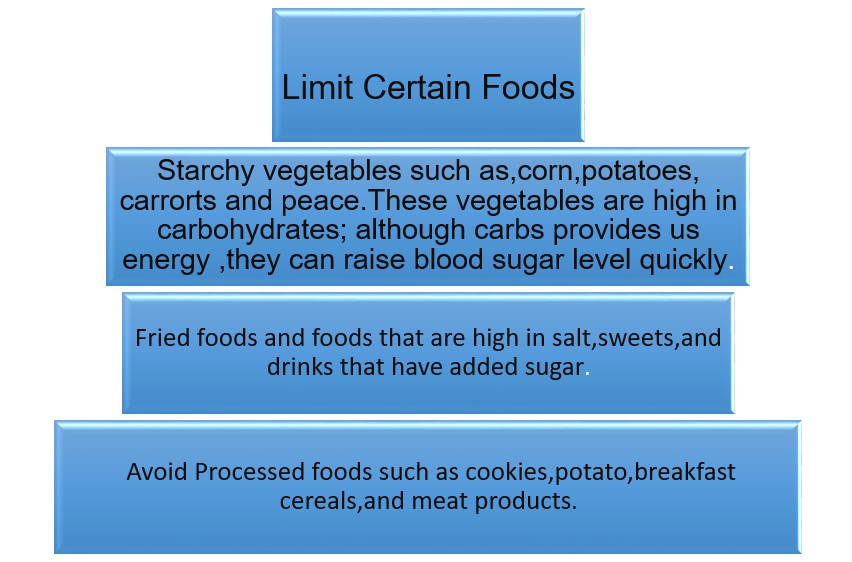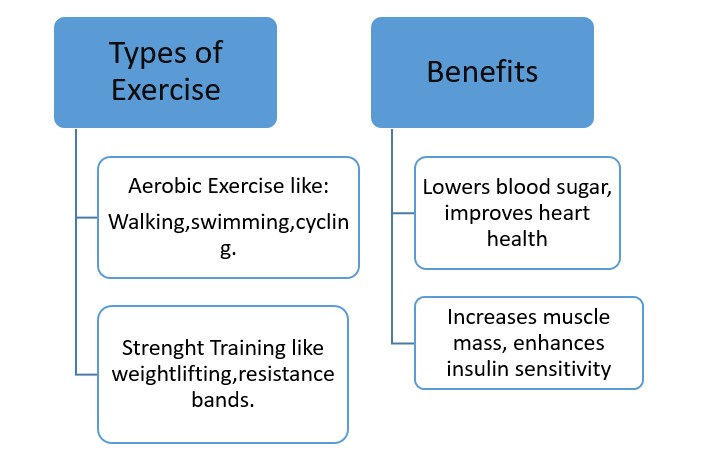Have you ever felt like diabetes is an unchangeable fate? Has the thought of every meal filled you with dread?
If you’ve been diagnosed recently or have been living with diabetes for years, or even decades, take heart – there is hope. We’re here to help you regain control of your life.
About 422 million people worldwide have diabetes, the majority living in low-and middle-income countries, and 1.5 million deaths are directly attributed to diabetes each year.
Both the number of cases and the prevalence of diabetes have been steadily increasing over the past few decades.
However, it is possible to reduce the impact of diabetes by taking preventive measures, diet and exercise and proper care for all types of diabetes.
These measures can help people living with the condition avoid or delay complications.
What is Diabetes?
Diabetes is a chronic, metabolic disease characterized by elevated levels of blood glucose (or blood sugar), which leads over time to serious damage to the heart, blood vessels, eyes, kidneys, and nerves.
In this disease, blood sugar (glucose) levels are too high due to insufficient insulin production or the body’s ineffective use of insulin.
Insulin is a hormone that helps glucose enter cells to be used for energy. When this process is disrupted, glucose accumulates in the bloodstream, leading to hyperglycemia.
Over time, high blood sugar can cause complications like heart disease, nerve damage, and vision problems.
Most types of diabetes are chronic but manageable with medications and lifestyle changes.
Types
Diabetes is a complicated condition that can take many different forms. The more common types of diabetes – type 1, type 2 and gestational diabetes.
Type-1 Diabetes
Type 1 diabetes occurs when your body can’t produce insulin because the cells in the pancreas that make it are destroyed by your immune system.
Insulin is crucial for allowing glucose from your blood into your cells for energy.
Without insulin, glucose builds up in the bloodstream, causing high blood sugar levels.
Type-2 Diabetes
When you have type 2 diabetes, your pancreas is unable to produce enough insulin or it is unable to do so effectively. This indicates that your blood sugar (glucose) levels continue to rise.
If you don’t take medication for type 2 diabetes, excessive blood sugar levels can cause major harm to your heart, foot, and eyes, among other body components.
However, if you receive the appropriate care and treatment of
type 2 diabetes properly, then lower your chance of getting it.
Gestational Diabetes
Pregnancy can lead to the development of gestational diabetes. It impacts women who have never had diabetes before.
It indicates that you should take additional care of yourself and your pregnancy because you have high blood sugar.
It usually goes away again after giving birth. It is usually diagnosed from a blood test 24 to 28 weeks into pregnancy.
| Type of Diabetes | Insulin Production | Management Focus |
| Type-1 | No Insulin Production | o Requires daily insulin injections or an insulin pump o Balanced diet and regular physical activity. |
| Type-2 | Insulin Resistance & Possible Low Insulin Production | o Focus on a healthy diet, regular exercise, and weight management. o Regular checks to manage blood glucose levels. |
| Gestational | Insufficient Insulin Production | o Insulin or other medications if lifestyle changes are not effective o Balanced diet and moderate exercise. o Monitoring blood glucose levels after delivery. |
According to Dr, Jane Smith, an Endocrinologist
“Diabetes management requires a comprehensive approach that includes lifestyle modifications, medication, and regular monitoring. “
How Common is Diabetes?
Diabetes is a growing global health crisis, affecting millions of people worldwide. According to the International Diabetes Federation (IDF), as of 2021:
- 537 million adults (20-79 years old) were living with diabetes globally.
- This number is expected to rise to 643 million by 2030 and 783 million by 2045 if current trends continue.
Diabetes in Pakistan
Pakistan has the third-highest number of people living with diabetes in the world According to the Diabetes Atlas (10th edition) released by the IDF in 2021.
An estimated 33 million adults in Pakistan have diabetes, which translates to a prevalence rate of about 19.4% of the adult population.
Type 2 diabetes represents 90% to 95% of all diabetes cases.
About 537 million adults across the world have diabetes. Experts predict this number will rise to 643 million by 2030 and 783 million by 2045.
Symptoms and Causes of Diabetes
Symptoms include
- Dry mouth (Increase Thirst)
- Fatigue
- Frequent Urination
- Slow healing of wounds
- Numbness in your hands and feet
- Blurred Vision
- Unexpected Weight loss
- Stomach Pains
Causes
Type 1 Diabetes
- Autoimmune Reaction: The immune system mistakenly attacks and destroys the insulin-producing beta cells in the pancreas.
- Genetics: Genetic factors can increase susceptibility, though the exact genetic triggers are not fully understood.
- Environmental Triggers: Viral infections or other environmental factors may trigger the autoimmune response.
Type 2 Diabetes
- Insulin Resistance: The body’s cells become resistant to the effects of insulin.
- Genetics: A family history of diabetes can increase the risk of developing Type 2 diabetes.
- Obesity: Excess body fat, particularly around the abdomen, can contribute to insulin resistance.
- Diet: Poor dietary choices, including high intake of processed foods and sugary beverages, can increase risk.
- Age: Risk increases with age, especially after 45.
Gestational Diabetes
- Hormonal Changes: During pregnancy, the placenta produces hormones that can make insulin less effective, leading to high blood sugar levels.
- Obesity: Overweight women are at a higher risk of developing gestational diabetes.
- Age: Women over 25 years old are at a higher risk.
The Role of Diet in Managing Diabetes
Here are some tips for managing diabetes with diet:

Eat Superfoods that fuel your body
- Heart-healthy fats, such as olive oil, nuts and seeds, salmon, and avocado.
- Whole foods, such as whole grains, fresh fruits and vegetables, and legumes.
- Non-starchy vegetables like broccoli, spinach, cucumbers, mushrooms, and peppers.
- Protein-rich foods such as black beans, black-eyed peas, poultry (chicken or turkey) without the skin, and fish such as Albacore tuna and mackerel.
Moreover, fiber plays a great role in helping to manage diabetes. It helps slow down the digestion of carbohydrates, which in turn helps regulate blood sugar levels.
So, eat fiber-rich foods

How Exercise Helps in Diabetes Management
Exercise is not just about burning calories; it’s a powerful way of managing diabetes.
Regular physical activity helps your body use insulin more effectively and lowers blood sugar levels.
So, try adding physical activity to your daily routine such as strength training or aerobic exercise.
Exercise Benefits | Impact on Diabetes Management |
| Improved Insulin Sensitivity | Reduces insulin resistance, stabilizes blood sugar |
| Lower Blood Sugar Levels | Maintains blood sugar control post-exercise |
| Weight Management | Helps reduce the risk of complications |
Types of Exercise
Here are some types of exercise which helps to manage diabetes

For those who are homebound, physical activity can include:
- Stretching
- Arm and/or leg raises
- Shoulder rolls
- Walking
- Chair yoga
Managing your diabetes doesn’t have to be difficult. Although medication may still be important to managing your condition, diet, and exercise can help keep your symptoms under control.
How to Create an Exercise Routine?
Here’s how to create a routine that works for you:
| Exercise Routine Tips | Guidance |
| Start Slow | Begin with short sessions and build up |
| Mix It Up | Include aerobic, strength, and flexibility exercises |
| Stay Consistent | Exercise regularly for best results |
Here are some tips to keep in mind:
- Check Your Blood Sugar: Monitor your blood sugar before and after exercising to ensure it stays within a safe range.
- Stay Hydrated: Drink plenty of water before, during, and after exercise to prevent dehydration, which can affect blood sugar levels.
- Carry a Quick Source of Sugar: Keep glucose tablets or a small snack with you in case your blood sugar drops too low during exercise.
Conclusion
By incorporating thoughtful dietary choices and regular exercise into your daily routine, you can make a significant impact on your blood sugar levels and overall health.
Eating a balanced diet rich in whole foods, paired with consistent physical activity, not only helps regulate glucose levels but also enhances your overall well-being.
Be sure to talk to your doctor before starting a new exercise routine and let them know if you have any questions or concerns about your diet or workouts.



